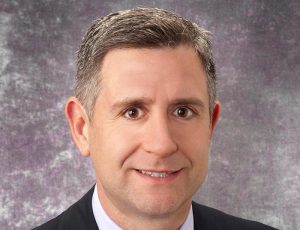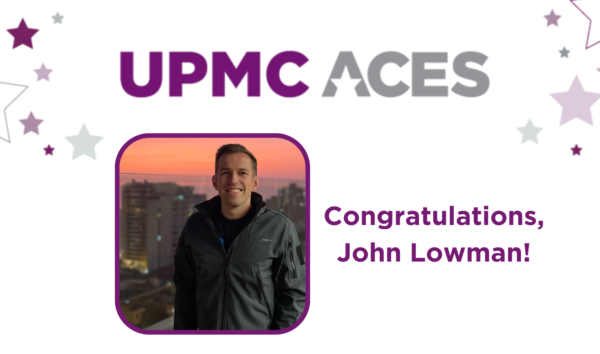UPMC Enterprises portfolio company Xealth is a key component of UPMC’s digital future. The Xealth platform allows UPMC providers to deliver digital health services at the point of care, driving patient engagement and improving the patient experience.

Xealth, a Seattle-based company that joined the UPMC Enterprises portfolio in 2017, allows providers to prescribe education materials, applications, and digital health services to patients directly from an electronic health record. The Xealth platform has been integrated with UPMC’s Epic record system and MyUPMC patient portal and is in the process of integrating with UPMC’s Cerner system.
While Xealth and UPMC received news media coverage in late 2018 for a program that allows patients to shop for provider-recommended products on e-commerce platforms, Xealth is being implemented more widely at UPMC.
Across the Women’s Health, Orthopaedic, GI, Cardiology, and Behavioral Health service lines, the Xealth platform has enabled more than 370 providers to order more than 125,000 digital health assets in the last two years – replacing printed paper materials that are costly to produce and update. The platform so far has achieved a 38 percent engagement rate with patients.
Patients receive digital prescriptions via MyUPMC. A key advantage of Xealth over printed materials or verbal recommendations is the platform allows providers see if their patients viewed materials and completed assignments.
“Xealth’s integration is a key driver of traffic to MyUPMC. This personalized, provider-recommended information serves as an engagement lever that goes beyond the traditional patient portal and differentiates MyUPMC,” said Tal Heppenstall, President of UPMC Enterprises.
Use cases at UPMC
In Orthopaedics, the use of Xealth at UPMC and other systems has received wide media coverage, including by CNBC, Geek Wire, and the Wall Street Journal. Providers can send their patients recommendations for products they might need following knee surgery, for instance. The recommendations, which are accessible through MyUPMC, are linked to e-commerce sites such as Amazon where patients have the option to purchase commonly used items that are recommended by their doctors.

In Women’s Health, meanwhile, Xealth has enabled greater digital engagement with patients over the past two years. The service line has experienced a 15 percent increase in sign-ups for UPMC maternity classes and a 52 percent increase in enrollment in a weekly email program since implementing Xealth. Additionally, providers can send product recommendations for items needed following the arrival of the baby, also linked to e-commerce sites.
“Xealth has made it much easier to scale the distribution of education materials to patients and reduce the variation between providers,” said Glenn Updike, MD, an obstetrician, medical director for clinical informatics at UPMC Magee-Womens Hospital, and medical director for MyUPMC (pictured, at left).
“We want to make sure patients at UPMC Susquehanna are getting the same information as patients in Pittsburgh, and Xealth allows us to introduce new materials much more quickly and cost effectively,” Dr. Updike said.
There also are great advantages for the providers. Clinicians order bundles of educational materials for their patients at the first, second, and third trimesters directly in the Epic system the same way they would order a test. Then clinicians can go back to see if their patients have viewed the materials.
“If we see that a patient is only watching 20 percent of a video, we can change it out to something shorter or find a video that’s more engaging,” Dr. Updike said. And that change can be made quickly and cost effectively without needing to communicate with every OB/GYN practice in the UPMC system or send out new printed materials.
Growing Xealth-UPMC partnership
Deployment across many service lines at UPMC also has advantages for Xealth. The company can test its platform and capabilities in a variety of clinical settings and situations with thousands of users, which provides valuable feedback on the technology.

“UPMC is widely recognized for its innovative use of technology to create new models of care, and their application of the Xealth platform to combine multiple digital solutions to drive measurable results is yet another example of their innovative approach,” Xealth CEO Mike McSherry said.
“Through the maternity care program, it’s great to see UPMC’s intelligent use of the Xealth platform to provide patients with a variety of digital tools ranging from content to providing e-commerce recommendations for over the counter products, all to provide a better outcome for the patient,” McSherry said.
McSherry, who formed Xealth in 2016 with a team of Entrepreneurs in Residence at Providence Health and Services in Seattle, has said that his goal with Xealth was to enable consumers to manage their health care digitally through their electronic devices the same way they manage the rest of their lives, and to connect clinicians to their patients via digital tools outside the traditional care environment. A key channel to enable this connection is the patient portal.
As the use of digital health services and applications proliferates, health system providers often have not been able to deploy digital health products for a variety of reasons, including lack of workflow integration into the charting system, difficult IT integrations, and lack of visibility into the effectiveness of the digital solutions with patients.
Xealth reduces friction in these areas by identifying appropriate digital content and services and incorporating access to them into the charting interface, automating the delivery, and providing utilization monitoring.
For UPMC, the use of Xealth is expected to grow through the deployment of new use cases across an increasing number of service lines. The goal for the platform is to become the single application through which UPMC deploys patient-facing digital health apps, programs, and content for its patients and providers to use.
“I think it really adds a nice touch to the patient experience when they go home if they see that I’ve sent them information about something we talked about during our visit,” Dr. Updike said.
“In a lot of ways, I think we’re only scratching the surface of what Xealth can do for us.”



